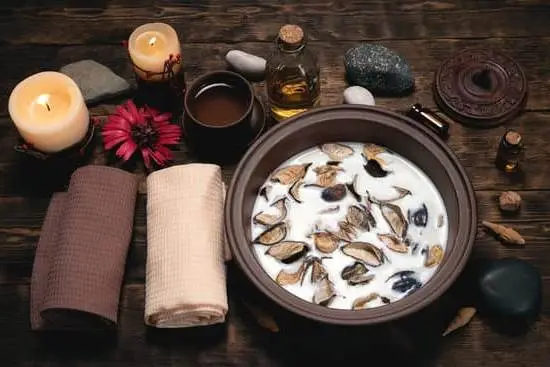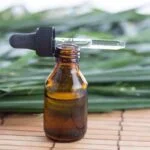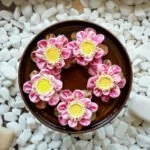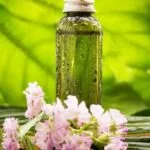Are you looking for a comprehensive resource on aromatherapy? Look no further than “The Complete Guide to Aromatherapy 2nd Edition.” This new edition covers everything you need to know about essential oils and their therapeutic uses. Whether you’re a beginner or an experienced practitioner, this guide is a must-have for anyone interested in the benefits and uses of aromatherapy.
Aromatherapy has been used for centuries as a holistic healing practice, and this introductory section sets the stage for exploring its many benefits and applications. From promoting relaxation and reducing stress to enhancing mood and improving overall well-being, aromatherapy offers a wide range of potential health benefits. In this section, we will delve into the history and origins of aromatherapy, from ancient traditions to modern practices.
One of the key components of aromatherapy is understanding essential oils and their healing properties. This section will provide a comprehensive guide to different types of essential oils, their unique therapeutic properties, and how they can be effectively used in aromatherapy practices. Whether you’re looking to improve your physical or mental well-being, essential oils offer a natural and versatile approach to health and wellness.
The History and Origins of Aromatherapy
Aromatherapy has a rich history that dates back thousands of years, with evidence of essential oils being used for their healing properties in ancient civilizations such as Egypt, China, and India. The practice of using aromatic plant extracts for medicinal and therapeutic purposes has evolved over time, from traditional rituals to modern-day applications in wellness and healthcare.
In this section, we will explore the fascinating history and origins of aromatherapy, shedding light on its journey from ancient traditions to contemporary practices.
Ancient cultures have long recognized the powerful effects of aromatherapy on the mind, body, and spirit. The Egyptians were known for their use of aromatic oils in religious ceremonies, cosmetics, and embalming practices.
Meanwhile, Ayurvedic medicine in India utilized the healing properties of plants and herbs, including essential oils, to promote balance and harmony within the body. Similarly, Traditional Chinese Medicine integrated the use of aromatic substances to address various health concerns and as a means of enhancing emotional well-being.
As we fast forward to the modern era, aromatherapy has gained popularity as a holistic approach to health and wellness. Its rise in mainstream culture can be attributed to the revival of herbalism and natural remedies, as well as an increased interest in alternative therapies for managing stress, anxiety, and other common ailments. Today, aromatherapy is widely practiced in spa settings, yoga studios, hospitals, and homes around the world.
In recent years there has been an increasing amount of scientific research supporting the effectiveness of aromatherapy for improving both physical and mental well-being. As more people turn to natural solutions for their health needs, it is evident that the demand for quality information on aromatherapy continues to grow. This is why “The Complete Guide to Aromatherapy 2nd Edition” is such a valuable resource for anyone seeking a comprehensive understanding of this ancient practice in our modern world.
| Ancient Cultures | Modern Era |
|---|---|
| Egyptians used aromatic oils in religious ceremonies | Rise in mainstream culture due to revival of herbalism |
| Ayurvedic medicine used essential oils for promoting balance | Scientific research supports effectiveness |
| Chinese Medicine used aromatic substances for health concerns | Widely practiced in spa settings and homes worldwide. |
Understanding Essential Oils
When it comes to aromatherapy, essential oils are the cornerstone of the practice. These concentrated liquids are derived from plants and have been used for centuries for their therapeutic properties. In The Complete Guide to Aromatherapy 2nd Edition, readers will find a detailed exploration of different types of essential oils and their unique healing properties.
Here is a breakdown of some popular essential oils and their known benefits:
- Lavender: Known for its calming and soothing properties, lavender essential oil is often used to promote relaxation and alleviate stress.
- Peppermint: With its invigorating scent, peppermint essential oil is commonly used to ease headaches, improve focus, and relieve nausea.
- Tea Tree: This versatile essential oil is prized for its antibacterial and antifungal properties, making it a popular choice for treating skin conditions such as acne and eczema.
In addition to these well-known essential oils, The Complete Guide to Aromatherapy 2nd Edition delves into lesser-known oils such as frankincense, bergamot, and chamomile, highlighting their unique benefits and applications in aromatherapy. Readers will gain a deeper understanding of how each essential oil can be incorporated into their wellness routine for maximum benefit.
The Complete Guide to Aromatherapy 2nd Edition
What’s New in the 2nd Edition:
- Expanded coverage of lesser-known essential oils and their unique healing properties
- Updated safety guidelines for using essential oils, including specific precautions for children and pregnant women
- The latest research on the psychological benefits of aromatherapy, including its potential use in managing stress and anxiety
- New chapter on sustainable sourcing and ethical practices in the production of essential oils
Readers will also benefit from a revised section on blending techniques, which includes new recipes for creating custom aromatherapy blends for various health concerns. Whether you’re interested in using essential oils for relaxation, pain relief, or skincare, The Complete Guide to Aromatherapy 2nd Edition has something new to offer. With this updated edition, readers can stay current with the evolving landscape of aromatherapy while deepening their understanding of holistic wellness practices.
Overall, The Complete Guide to Aromatherapy 2nd Edition is a comprehensive resource that reflects the latest advancements in the field of aromatherapy. This updated edition serves as an invaluable tool for anyone seeking to harness the power of nature’s remedies for improved health and well-being.
Aromatherapy Techniques and Practices
The Complete Guide to Aromatherapy 2nd Edition offers an in-depth exploration of different aromatherapy techniques and practices, from the use of diffusers to the application of massage oils and beyond. Aromatherapy is not only about enjoying pleasant scents; it also involves the understanding and application of essential oils to promote overall well-being. This section will delve into the various ways in which aromatherapy can be incorporated into daily routines for therapeutic benefits.
One popular technique in aromatherapy is the use of diffusers, which work by dispersing essential oils into the air, allowing for easy inhalation and absorption. Diffusers come in different types, including ultrasonic diffusers, nebulizing diffusers, heat diffusers, and evaporative diffusers. Each type has its own unique way of dispersing essential oils, catering to different preferences and needs.
Another common practice in aromatherapy is the use of massage oils. When essential oils are diluted with carrier oils and applied onto the skin through massage, they can provide physical and mental benefits. Some popular carrier oils include coconut oil, jojoba oil, and almond oil. By massaging these blends onto the skin, individuals can experience relaxation, stress relief, pain reduction, improved circulation, and more.
In addition to diffusers and massage oils, there are numerous other practices within aromatherapy that can be explored in The Complete Guide to Aromatherapy 2nd Edition – from aromatic baths and steam inhalation to creating personalized essential oil blends for specific health concerns or mood enhancement. Understanding these techniques is key to making the most out of the healing properties of essential oils.
| Aromatherapy Technique/ Practice | Description |
|---|---|
| Diffusers | Disperse essential oils into the air for easy inhalation and absorption |
| Massage Oils | Diluted with carrier oils for application through massage; provides physical and mental benefits such as relaxation and stress relief |
| Aromatic Baths/ Steam Inhalation |
Aromatherapy for Health and Wellness
Aromatherapy has been used for centuries as a holistic approach to improving physical and mental well-being. In the 2nd edition of The Complete Guide to Aromatherapy, readers can expect an expanded section on how essential oils can be used to promote overall health and wellness. From relieving stress and anxiety to supporting immune function, essential oils have a wide range of benefits for the body and mind.
Benefits of Aromatherapy for Physical Health
One of the key aspects of aromatherapy is its ability to support physical health. Certain essential oils have been found to have antimicrobial, anti-inflammatory, and analgesic properties, making them valuable tools for treating various ailments.
For example, tea tree oil is known for its antibacterial properties and can be used topically to treat skin infections, while peppermint oil is often used to relieve headaches and muscle tension. The 2nd edition of The Complete Guide to Aromatherapy delves into the science behind these benefits and offers practical advice on using essential oils for physical well-being.
Aromatherapy for Mental Well-Being
In addition to its physical benefits, aromatherapy also plays a crucial role in promoting mental well-being. Essential oils such as lavender, chamomile, and bergamot are known for their calming and mood-enhancing effects, making them effective tools for managing stress, anxiety, and depression.
The new edition of The Complete Guide to Aromatherapy explores the use of these oils in detail, providing readers with insights into how aromatherapy can positively impact mental health. Whether through inhalation or topical application, essential oils offer a natural approach to promoting emotional balance and overall mental wellness.
Integrating Aromatherapy Into Daily Routines
For those looking to incorporate aromatherapy into their daily lives, the 2nd edition of The Complete Guide to Aromatherapy includes practical tips and strategies for using essential oils in everyday routines. From creating custom blends for diffusers to making homemade massage oils and skincare products, this comprehensive guide offers readers creative ways to experience the benefits of aromatherapy in their own homes.
Whether seeking relief from pain or simply looking to uplift the spirit, integrating aromatherapy into daily routines can lead to improved physical and mental well-being.
Aromatherapy for Beginners
Are you interested in incorporating aromatherapy into your daily routine but don’t know where to start? This section will provide you with some tips and tricks for beginners to get started with using essential oils for health and wellness. Whether it’s for relaxation, stress relief, or improving your mood, aromatherapy has numerous benefits that can be enjoyed by anyone.
Choosing the Right Essential Oils
One of the first steps in incorporating aromatherapy into your daily routine is to choose the right essential oils for your needs. With a wide variety of essential oils available, it can be overwhelming to know where to start.
Some popular essential oils for beginners include lavender for relaxation, peppermint for mental clarity, and lemon for a mood boost. It’s important to do some research on the different properties of essential oils and how they can benefit you before making a selection.
Methods of Use
Once you have selected the essential oils that suit your needs, the next step is to decide on the methods of use. There are various ways to enjoy the benefits of aromatherapy, including diffusing essential oils using a diffuser, adding them to bath water, creating homemade room sprays or using them in massage oils. Each method has its own unique benefits and can be used depending on personal preferences and situations.
Incorporating Aromatherapy Into Your Daily Routine
Incorporating aromatherapy into your daily routine is easier than you might think. You can start by diffusing essential oils while working or relaxing at home, adding a few drops to your bath before bedtime, or using them during meditation or yoga sessions.
By finding simple ways to incorporate aromatherapy into your day-to-day activities, you can experience the therapeutic benefits of essential oils without disrupting your schedule. Remember that consistency is key when it comes to reaping the full benefits of aromatherapy in your daily life.
The Future of Aromatherapy
In conclusion, as we look ahead to the future of aromatherapy, it is evident that there are continued advancements and innovations in the world of essential oils and aromatherapy treatments. With the release of The Complete Guide to Aromatherapy 2nd Edition, readers can expect to be updated on the latest trends and developments in this field. From new research findings to cutting-edge techniques, this edition promises to provide a comprehensive overview of the latest advancements in aromatherapy.
One notable trend that is emerging in the world of aromatherapy is the focus on sustainability and ethical sourcing of essential oils. As consumers become more conscious of environmental impact and ethical practices, there is a growing demand for responsibly sourced and eco-friendly products. The 2nd edition of The Complete Guide to Aromatherapy addresses this trend by highlighting companies and practices that prioritize sustainability and ethical sourcing.
Additionally, as technology continues to advance, we can expect to see innovations in aromatherapy tools and devices. From high-tech diffusers to personalized aroma blends created through digital platforms, the future of aromatherapy holds great potential for integrating technology with traditional practices.
With so many exciting developments on the horizon, it is clear that aromatherapy will continue to evolve and adapt to meet the needs of modern consumers. The Complete Guide to Aromatherapy 2nd Edition offers a glimpse into this exciting future and serves as a valuable resource for anyone interested in staying updated on the latest trends and innovations in aromatherapy.

Are you looking for a natural way to improve your health and wellbeing?
If so, aromatherapy may be the answer for you.





